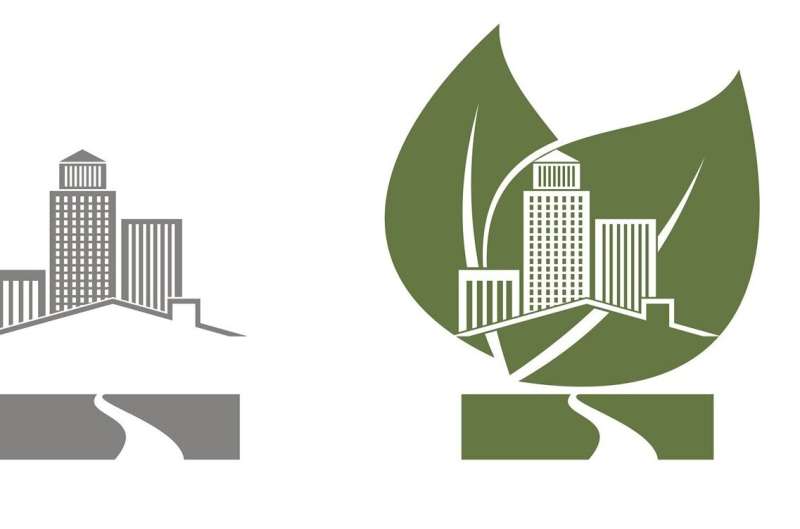This article has been reviewed according to Science X's editorial process and policies. Editors have highlighted the following attributes while ensuring the content's credibility:
fact-checked
trusted source
proofread
How large is the US 'green economy?'

One way to gauge a country's attention to the environment may be measuring how much of its economy is devoted to protecting, rehabilitating, and preserving the natural environment. While the U.S. has made prior attempts at tracking "green jobs" and "green goods and services," the U.S. government does not currently account for this sector.
Kelly Wentland, an assistant professor of accounting at George Mason University School of Business, is helping to fill this data gap. She is the sole academic working with the U.S. Department of Commerce's Bureau of Economic Analysis (BEA) to develop a pilot account tracking the environmental, goods and services (EGSS) sector of the U.S. economy. (The UN defines ESGG as "compris[ing]…the economic activities that result in products for environmental protection and resource management.")
Wentland and the BEA team have produced a pilot EGSS account, along with preliminary results that formed the basis of a recent working paper, presented at the March 2023 NBER-CRIW conference.
"What we're doing is, we're developing a national account based on the supply side of our economy," Wentland explains.
Ninety countries have introduced their own environmental-economic accounts based on frameworks from the UN Statistical Commission. The challenge for Wentland and the BEA team was to design their pilot account so that it would be comparable to those of other countries while aligning with established approaches from the U.S. federal government. This involved making a huge number of close comparisons between European and American product and industry classification standards to identify shared data points that mapped to UN guidelines.
After carefully selecting for relevant economic activity during the years 2015 and 2019, the team used the BEA's supply-use tables–extremely detailed compilations of economic inputs and outputs for more than 5,300 product categories–to build their estimates.
They found that EGSS accounted for $620.6 billion in 2015, and $724.5 billion in 2019. The top four categories were responsible for about 70% of the total. These were: waste management (far and away the top category, comprising one-quarter of the entire sector), management of water, wastewater management and protection of biodiversity and landscapes. This roughly matches up with equivalent studies in the EU, which also have waste management as the largest environmental-economic category, with 26%–27% of the total.
Wentland and her collaborators also divided EGSS activity into private- and public-sector output. In 2015, the government portion of environmental output stood at 28.3%, and the private-sector contribution at 71.7%. By 2019, the balance had shifted slightly, with 27.2% attributed to government spending, and 72.8% to commerce.
Wentland stresses that the account is very much a work in progress. "It's very important to point out that it is not an official BEA national account. It is purely a pilot effort to see how far we can get with the data the U.S. already has." Part of the purpose of the pilot is to identify gaps in the current data available as future avenues to improve estimates. Environmental research and development (R&D) is one potentially significant area where data were inaccessible.
"A lot of companies are putting out sustainability reports, but when you get down to what percentage of them actually include an annual dollar value attached to their activity, it's very low," Wentland says. She notes that the SEC's proposals for mandated environmental reporting–which may be scaled down amid strong corporate pushback–could help fill this void. "The alternative is likely adding questions to other lengthy surveys the BEA collects from these companies."
So far, the reaction to Wentland's work from government-affiliated economists has been markedly positive. "The main critique had to do with the international guidelines for product classifications themselves, rather than our methodology," Wentland reports.
As of this writing, further development of the EGSS pilot account hinges upon the progress of President Biden's budget for 2024. "It's formally listed in the budget that they have an increase allocated to this as part of the increase in the BEA's budget. Obviously, we'll have to see how things pan out in terms of whether the budget moves forward."
As Wentland sees it, calculating the dollars and cents that go into the "green economy" would enable granular, impact-focused policy debate on climate issues. "You could think about research or policy that wants to say, 'When we spend more on EGSS, do we see emissions change or which types of investment have more impact than others?' You have to be able to measure both the effort and the outcome, in order to be able to say something about its effectiveness."
More information: Accounting for Environmental Activity: Measuring Public Environmental Expenditures and the Environmental Goods and Services Sector in the US: www.nber.org/system/files/chap … rs/c14825/c14825.pdf
Provided by George Mason University





















